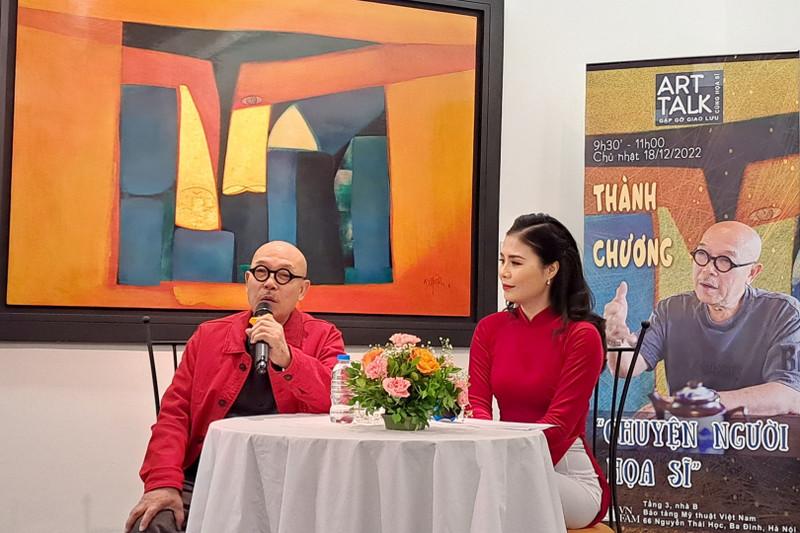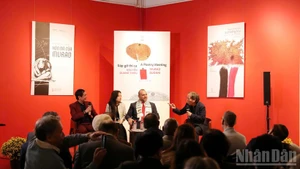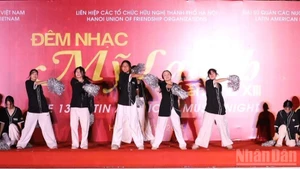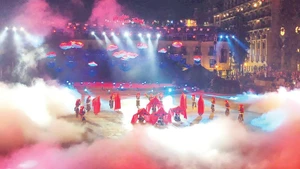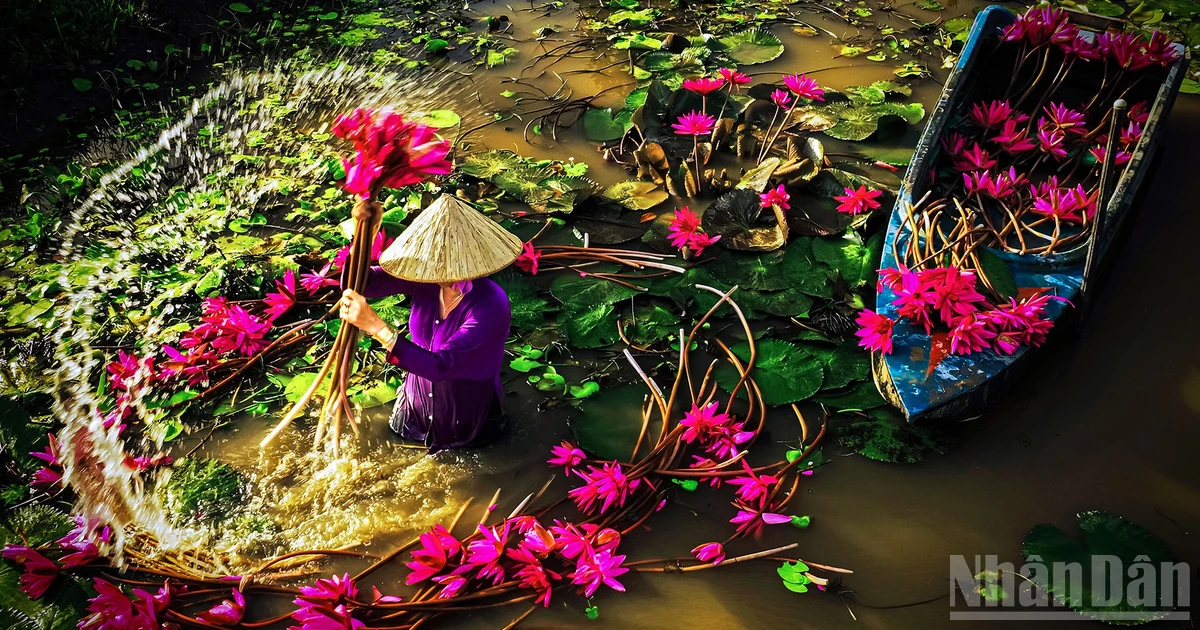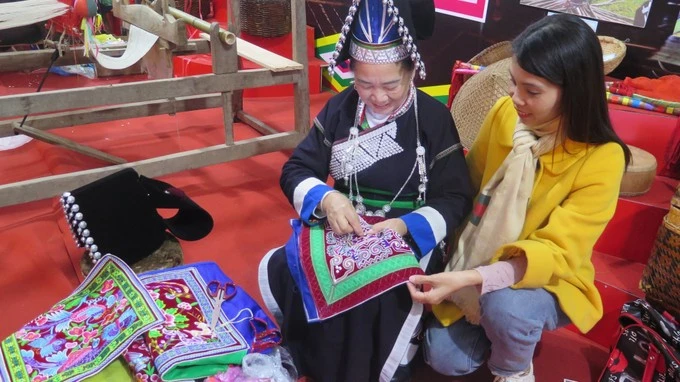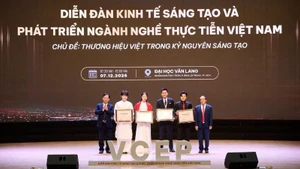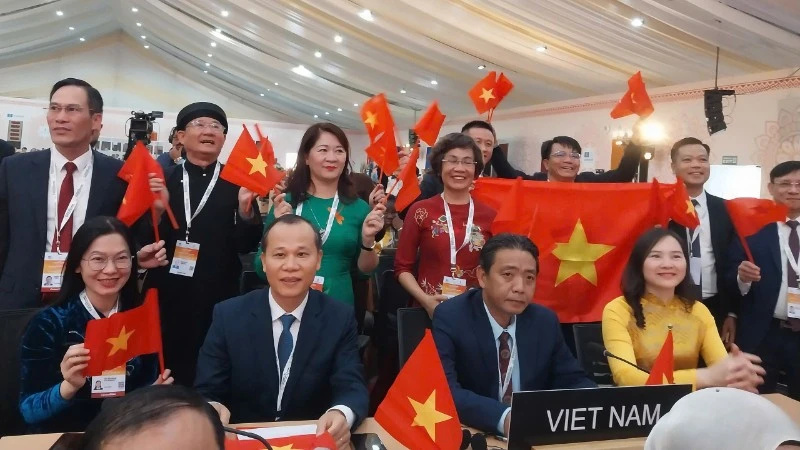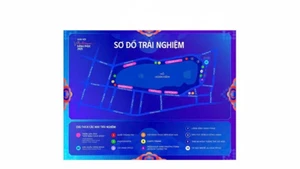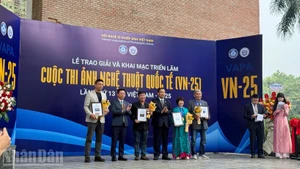In an interview with Thoi Nay (Present Day), a publication of Nhan Dan (The People’s) Newspaper, Thanh Chuong reflects on his near seven decades in journalism, asserting that illustration has been more than a profession — it has laid the foundation for his painting style.
Q: You began your press collaboration during the wartime. What role did journalism play for artists during that period?
Painter Thanh Chuong: I began contributing illustrations to the press from a very young age, for almost every major newspaper. Initially, I painted on wax and carbon paper and delivered the artworks to the printing house myself.
As technology progressed, I experimented with other mediums like screen printing. At one point, we even carved illustrations onto wooden blocks and printed them onto tracing paper. It wasn’t until much later that zinc printing plates became widely available.
In short, I’ve been illustrating since I was 13, and now, at nearly 80, I remain passionate about it.
Back then, working with the press was both sacred and significant. I can’t speak for other places, but in Viet Nam, it was an immense honour to be invited to contribute illustrations, especially for Van Nghe Viet Nam (Vietnamese Literature and Arts). It felt like a professional accreditation.
Q: Wartime illustration faced limitations with small paper formats, black-and-white printing, and scarce materials. How did artists retain their creative distinctiveness?
A: Difficult conditions never hindered an artist’s technique or expression. Courage in art is essential, and technical skill is indispensable. Modern tools can enhance creativity, but emotion is always the root. Technique is only effective when wielded by someone who understands how to use it.
Q: Could you name some artists who rose to prominence through press illustration?
A: Many did, including the esteemed To Ngoc Van, Bui Xuan Phai, Van Cao, Nguyen Sang, and Nguyen Bich.

Q: After so many years illustrating for newspapers, how do you view art’s role in journalism?
A: Illustration elevates the prestige of the press. It initially served to visually reflect the content of literary or journalistic stories. But now it has become a derivative artwork of literature and journalism. The illustrator utilises art to interpret and express emotional responses to the text.
My father, the writer Kim Lan, once told me: “Take pride in your illustrations. A painting in a gallery might reach a hundred viewers. But in print, your work appears before thousands or even millions — it's a mobile exhibition. So, treat every illustration as a painting, created with seriousness, care, and emotion.”
I took his words to heart. I approached each illustration as I would a standalone artwork, which helped shape my painting style.
Q: When illustrating for the press, what matters most? Technique, literary fidelity, or emotion?
A: All of them, intertwined. The story inspires you, and from there, you find the most fitting form to express your artistic voice.
Q: How did you convey the spirit and characters of stories through such modest newspaper formats?
A: Passion, delight, and emotional sensitivity allow the artist to breathe life into even the smallest formats. Artistic intent doesn’t depend on scale.
Q: Your illustrations often captured traditional Vietnamese themes and daily life. Was this a natural choice or a deliberate aesthetic approach?
A: I simply painted what surrounded me. The vivid cultural identity of Vietnamese daily life that I loved and admired shaped both my illustrations and my painting style.
One particularly versatile illustrator of that era was Bui Xuan Phai. He could render any subject masterfully, from rural Viet Nam to foreign narratives. He even managed to depict tractors and ploughs, which were difficult due to a lack of visual references. His secret? He watched television closely and sketched from memory. He was incredibly dedicated.
Q: Among your many newspaper illustrations, is there one that still stands out in your memory?
A: During the war, I sent many battlefield sketches from Truong Son for publication. One featured a soldier named Ngo Xuan Hoa. Later, writer Ngo Xuan Hoi sought me out, telling me Hoa was his younger brother.

Q: With the advent of digital design and AI, hand-drawn illustration seems to be disappearing. What’s your perspective on this shift?
A: Whether drawn by hand or machine, these are just tools. The essence lies in the artist, in their creativity, emotion, and openness.
We must embrace modernity. It would be absurd to cycle to Ho Chi Minh City today, wouldn’t it?
I still prefer hand drawing, not because I shun technology, but because handmade illustrations carry deeper emotions.
Q: Reflecting on your journey, do you see press illustration as a minor footnote or a major influence in your artistic life?
A: It’s a major chapter. I hold immense gratitude and respect for the years I devoted to illustrating for the press.
Q: Today, many young artists seem uninterested in illustration. Has it lost its place in the art world?
A: Many artists are skilled painters but struggle to illustrate. Yet strong illustrators tend to be accomplished painters. Illustration demands everything — form, emotion, sentiment, style, technique, personal voice, intellect, even philosophy. It’s an invaluable training ground and should not be overlooked.
Q: What do you hope for the role of the arts in the future of journalism?
A: That’s hard to predict. Life evolves quickly. The future belongs to the youth, and now it’s my turn to try to keep pace and keep learning.
The younger generation is full of talent. I believe that as society progresses, art will remain an inseparable part of life.
Thank you so much for your sharing!
